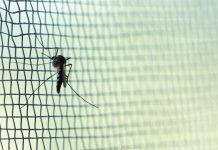Dealing with skin conditions can be challenging, especially when two rare skin conditions, generalised pustular psoriasis (GPP) and acute generalised exanthematous pustulosis (AGEP), have similar symptoms, making it challenging to differentiate between them
Thanks to a new scoring system developed by Osaka Metropolitan University (OMU) researchers and the Mayo Clinic, there is now hope for a quicker and more accurate diagnosis of these conditions.
Being able to tell the difference between GPP and AGEP
The team, led by Dr Mika Yamanaka-Takaichi and Professor Daisuke Tsuruta from OMU, alongside Professor Afsaneh Alavi from the Mayo Clinic, aimed to tackle the diagnostic dilemma that GPP and AGEP cause.
These rare diseases can have severe effects if not identified and treated promptly, but similar symptoms make it difficult to tell the difference between the two.
The new scoring system, composed through a detailed analysis of clinical data and laboratory findings from 54 GPP patients and 63 AGEP patients spanning over two decades, offers hope for both patients and physicians.
Creating the scoring system
Being able to distinguish between GPP and AGEP accurately is crucial for effective treatment, and the scoring system aims to facilitate this process, potentially saving valuable time and ensuring patients receive the most appropriate care.
The research demonstrates how the scoring system considers a range of factors, including the nature of skin lesions, symptoms, and laboratory results. By assigning scores to each criterion and tallying up the total, clinicians can more confidently differentiate between the two conditions.
Previously, diagnosing GPP versus AGEP was difficult for medical professionals due to their overlapping symptoms.
Better management of the two skin conditions
This scoring system provides a practical tool that could change how these two diseases are identified and managed.
One of the key benefits of the scoring system is its potential to speed up diagnosis. Early intervention is crucial in preventing the progression of these diseases and minimising complications.
“The results of this research might help medical professionals distinguish between GPP and AGEP, which have been difficult to differentiate in clinical practice. We hope the scoring system we suggest can lead to quicker diagnosis and the choosing of appropriate treatment,” Dr. Yamanaka-Takaichi said. “In the future, we aim to establish a diagnostic index that clinicians can use practically to differentiate between the two diseases.”
This scoring system helps practitioners with a more accurate diagnosis and better treatment for GPP and AGEP.
Editor's Recommended Articles
-
Must Read >> Non-melanoma skin cancers & malignant melanoma











